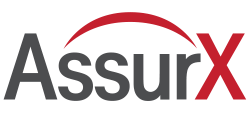August 22, 2024
The challenge of the quality manager is to convince stakeholders of their responsibilities and accountability in the CAPA process, provide them with solutions that help them succeed, and deploy methods to monitor and measure progress toward goals and quality issue resolution.
Here are three strategies quality management professionals can employ to pave a successful path forward for a robust CAPA process from the start.
Strategy 1: Lead with collaboration and accountability
While it is in the quality manager’s hands to develop the CAPA program and write the standard operating procedures (SOP), other stakeholders will be required to follow the program and protocols when a quality issue arises.
How Highline Warren, a $1B manufacturing organization, went from a paper & pencil CAPA system software to digital with AssurX.
Read the Case Study
To set the program up for success from the start, engage stakeholders in writing the SOPs so they know what will be expected of them during the CAPA process. Make it a collaborative activity where every person who the process could potentially touch can review the SOPs, provide their feedback, and sign off on the written procedures.
That way, if someone questions or challenges anything during any stage of the CAPA process, for example, an assigned task or agreed upon deadline, the quality manager can point the stakeholder to their written approval of the SOPs to help keep things on track.
In taking a collaborative approach, the quality manager can also communicate to stakeholders the message “we are all in this together.” Because fear of admitting a misstep or mistake is a major challenge to effective root cause analysis and investigation, it is important for the quality manager to foster an environment of collective issue resolution as opposed to finger-pointing, blaming and shaming.
It is critical to note that while a collaborative approach to CAPA can help secure stakeholder engagement, accountability is key to keeping them committed. A quality manager should never assign a task to a team, but rather to a specific individual. Holding individuals directly accountable for meeting deadlines and completing tasks contributes to CAPA process efficiency.
Strategy 2: Leverage tools and technology solutions
CAPAs can be very complex, with the quality manager orchestrating the actions of various stakeholders in alignment with SOPs where steps must be completed in accordance with a committed timeline. There are a variety of tools and technologies available to help stakeholders effectively and efficiently perform their tasks.
For example, a root cause analysis facilitator can leverage The 5 Whys, Kepner-Tregoe Matrix, fishbone diagrams, pareto charts, and scatter diagrams. The facilitator should be well versed in multiple root analysis tools so they can switch from one to another to overcome roadblocks encountered during an investigation and truly dig down to the core of the quality issue.
On a broader scale, companies that have in place a cloud-based enterprise quality management system (EQMS) with integrated closed-loop CAPA management software can automate and standardize all processes to drive consistency, accuracy and efficiency from incident capture to closure. The move from manual processes and disjointed, legacy systems to automated, digital workflows and seamless system integration is a core component of Quality 4.0.
During plan implementation, EQMS capabilities including digital data capture, standardized workflows/documentation and process automation serve to align CAPA stakeholders in collectively moving forward. The most advanced EQMS solutions feature dashboards, status reports, alerts, notifications, and escalations that keep teams and management aware of late tasks and review requests.
In addition, corrective action management software with automated effectiveness checks and compliance verification provides the quality manager confidence in CAPA program ISO and GxP alignment.
Strategy 3: Link all decisions and actions to data
With cloud-based solutions, system integration, digital data capture and advanced analytics (AI, ML), today’s quality managers have credible and actionable insights at their fingertips to inform and guide the CAPA process from start to completion.
Take a data-driven approach at every stage to determine what went wrong, develop a plan to effectively address the issue, confirm successful issue resolution, and monitor processes to ensure it doesn’t happen again.
During the CAPA process, use data and analytics to inform stakeholder decisions, change direction when needed, and demonstrate how their work is making a difference – fewer defects are being found, the volume of complaints is going down, etc.
Accurate data is key to the CAPA effectiveness check. To that point, a common pitfalls is performing this step too early or too late in the CAPA cycle. A quality manager should avoid leaving CAPA open for too long, but they also don’t want to close it too soon before they’ve validated that those actions taken are effective.
Therefore, it is best practice to perform the effectiveness check 60-90 days from completion. A strong data foundation and analytics capabilities will guide the quality manager in determining whether the issue has been resolved or if further action is needed.
Lastly, data analysis is also critical to the continuous improvement of the CAPA program and overall quality management system. Never lose sight of the fact that quality management is a process, not a project. No matter how well thought out and detailed, there is always room for improvement. An EQMS with key performance indicators (KPIs), trending, and reporting tools can help determine CAPA program effectiveness and identify areas for enhancement.
Conclusion
Effective quality management, including targeted and efficient issue identification and resolution, are essential for companies across all industries.
Quality managers who build their CAPA programs and teams on a foundation of stakeholder engagement and accountability and guide their processes with advanced technologies, credible data and advanced analytics, position their companies for short-term quality improvements and long-term QMS success.
Check out a demo video of the AssurX CAPA management solution
About the Author
Stephanie Ojeda is Director of Product Management for the Life Sciences industry at AssurX. Stephanie brings more than 15 years of leading quality assurance functions in a variety of industries, including pharmaceutical, biotech, medical device, food & beverage, and manufacturing.


